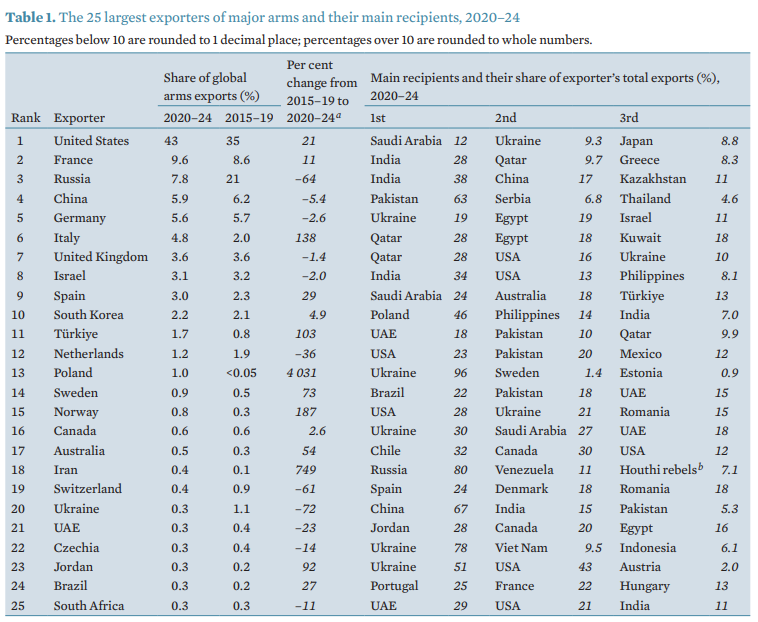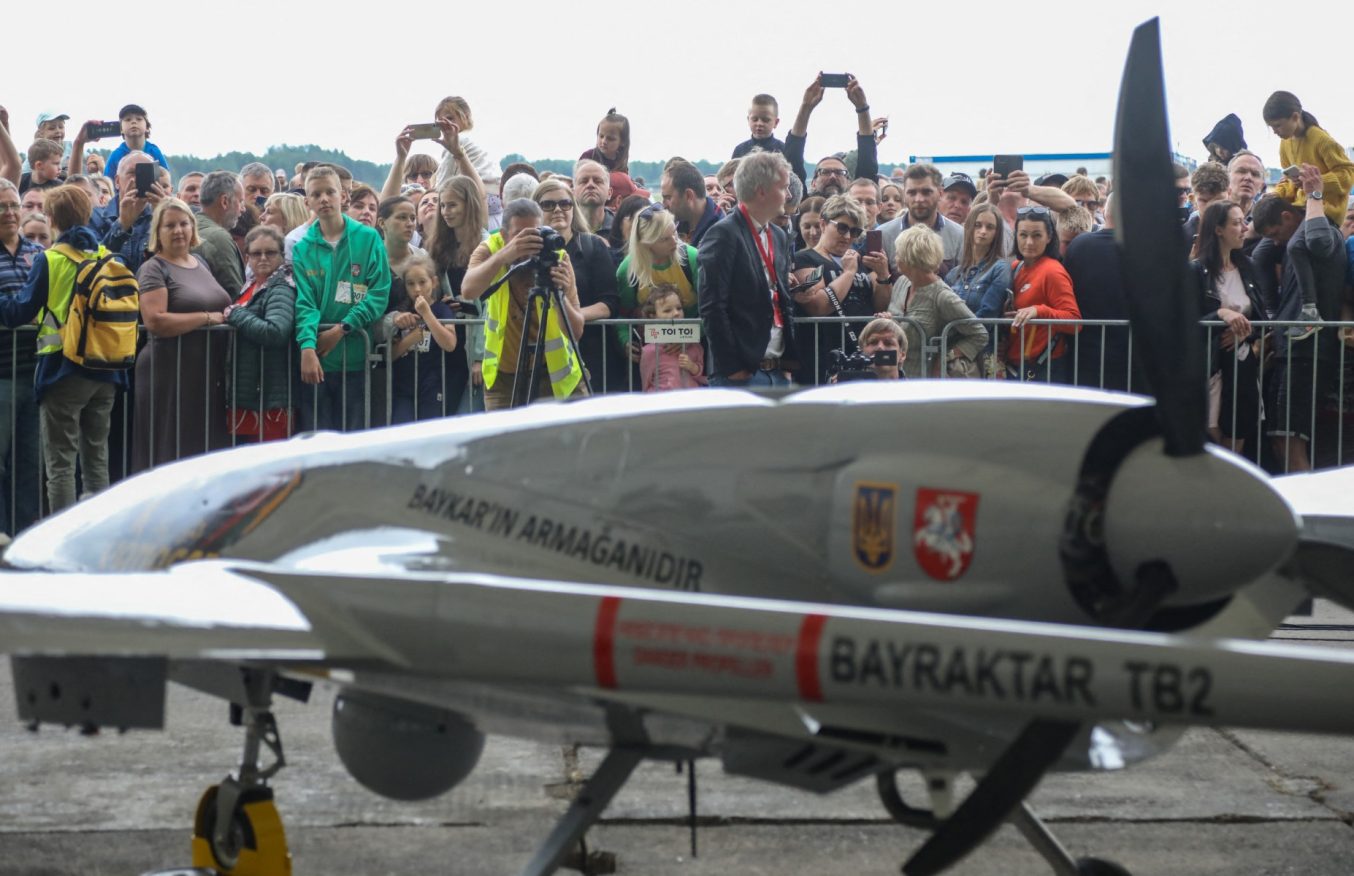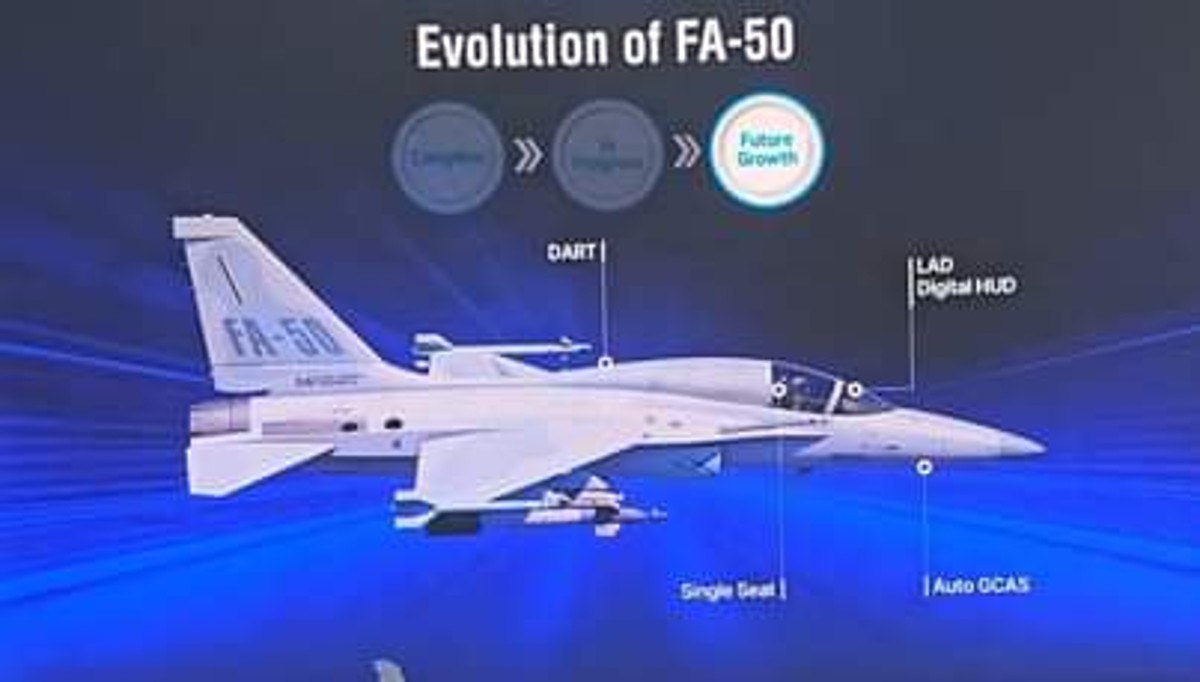1st Asian Country To Arm NATO State With Tanks & Jets — S.Korea Aims To Emerge Top-4 Weapons Exporter; Can It Topple China?

The world today is a much dangerous place than it was one decade ago. War has returned to Europe after seven and a half decades of peace, and many frozen conflicts are flaring again.
The strategic restraint that even conflict-ridden countries had been following for decades has been broken. Apart from the Ukraine War, the year 2025 has already seen three short but intense wars (India-Pakistan, Thailand-Cambodia, and Iran-Israel).
Amid heightened tensions, countries around the world are increasing defense spending to levels not seen since the Cold War. With rising defense spending comes rising opportunities for defense exports, and several countries are trying to ride this wave.
While defense exports have traditionally been a bipolar contest between the US and Russia (formerly the Soviet Union), in the last decade, many new players have entered the market to claim a greater share of the pie.
The top 5 world’s biggest defense exporters are: USA, France, Russia, China, and Germany. They are followed by Italy, the UK, Israel, Spain, and South Korea.
Currently ranked 10th in arms sales on the Stockholm International Peace Research Institute’s (SIPRI) top 10 defense exporters list, South Korea aims to break into the top four by 2030, which means it would have to surpass China.
While South Korea’s defense industrial complex has made impressive strides in recent years, and many of its weapons systems are extremely popular in the global export market, is Seoul aiming too high by targeting the top four positions in defense exports?
Or is there a realistic chance that Seoul could meet its ambitious target?
South Korea Aims To Become World’s 4th-Largest Defense Power By 2030
South Korean President Lee Jae Myung said on October 20 that the country will devote a “larger-than-expected budget” in defence and aerospace research until 2030 as it seeks to build the world’s fourth-largest defence industry.
Lee was speaking at South Korea’s largest-ever arms fair, the Seoul International Aerospace & Defense Exhibition (ADEX) 2025, where firms showcased new unmanned and artificial intelligence-enhanced weapons, from howitzers to suicide drones, in pursuit of greater global defense sales.
“Becoming one of the top four powerhouses in the defence industry is by no means an impossible dream,” Lee declared, outlining a strategy centered on self-reliance and technological sovereignty.
“We will establish technological sovereignty by focusing investment on the development of technologies, parts, and materials that must be secured independently, such as special semiconductors in the defence sector.”
Lee said that South Korea will share not only its defense platforms but also “the technology and experience of building an industrial foundation” with its overseas defense partners.
Arms are one of the fastest-growing exports of South Korea.
South Korean Arms Exports
South Korea’s defense exports surged dramatically starting in 2021, positioning the country as a top-10 global arms exporter by volume, according to the SIPRI data.
Between 2018 and 2020, South Korean arms exports averaged around USD 2-3 billion. In 2021, the country’s arms exports crossed USD 7 billion, registering over 150% growth.
In 2022, South Korean defense exports touched an all-time high of USD 17.3 billion. In February that year, Russia invaded Ukraine, which indirectly boosted South Korean defense exports.
Firstly, due to the war, Russian defense exports plummeted. At the same time, the return of conventional war to Europe after many decades boosted the demand for weapons and ammunition from new sources.
The record South Korean defense exports in 2022 were fueled by deals like Poland’s US$14.5 billion purchase of tanks and howitzers.
In subsequent years, South Korean defense exports declined slightly but remain around US$10 billion annually.
According to SIPRI, between 2020 and 2024, South Korea was the 10th-largest defense exporter worldwide, accounting for 2.2% of global arms exports.

There were nine countries ahead of South Korea: Spain (3% share in global arms exports), Israel (3.1%), the UK (3.6%), Italy (4.8%), Germany (5.6%), China (5.9%), Russia (7.8%), France (9.6%), and the US (43%), leading the chart with a good distance.
Can South Korea Break Into The World’s Top 4?
To be in the top four, South Korea will have to beat China. For that, South Korea must nearly triple its share in global arms exports from the current 2.2% to 6%. At the same time, China’s defense exports should stay stagnant.
And both these scenarios look highly unlikely.
Firstly, for perspective, SIPRI data show that South Korea had a 2.1% share of the global arms export market between 2015 and 2019. This increased to 2.2% between 2020 and 2024, registering a mere 4.9% growth.
Now, to be in the top four, South Korea must increase its share of global arms exports by nearly 300% within the next five years.
Furthermore, South Korea must achieve this feat without having a significant share in the global aerospace industry. While the South Korean light combat aircraft, KAI T-50 Golden Eagle (and its variants such as TA-50 and FA-50), has won multiple international deals, South Korea’s indigenous 4.5-generation multirole fighter jet, KF-21 Boramae, is still struggling to secure any significant export orders.
Furthermore, the South Korean aerospace industry has not made its presence felt in military transport aircraft, AWE&C, helicopters, or combat drones.
In fact, Turkey, which is placed behind South Korea in defense exports, has taken an insurmountable lead in combat drones.
Turkey currently enjoys 65% of the global combat drone market, followed by China. This shows that when it comes to military drones, South Korea is facing a challenge not only from countries ahead of it, but also from countries that are placed behind South Korea.

Meanwhile, Turkey, currently ranked 11th, is also trying to break into the world’s top 10 defense exporters, underscoring the need for South Korea to monitor even countries that are behind it.
Furthermore, Turkey is developing its own fifth-generation stealth aircraft, the KAAN, which has already won international orders from countries such as Indonesia. At the same time, Pakistan, Saudi Arabia, and the UAE have expressed interest in it.
Meanwhile, China is years, if not decades, ahead of South Korea in aircraft technology.
China has already developed two fifth-generation aircraft, the J-20 and J-35A, and is testing two sixth-generation aircraft, tentatively named the J-36 and J-50. China has also developed indigenous AEW&C aircraft, the KJ-3000, which is based on the Y-20B transport aircraft, as well as other military transport aircraft.
China has also won international orders for its J-10C and JF-17 Thunder (jointly developed with Pakistan). In 2025, Azerbaijan placed an order for 40 JF-17 Thunder fighter jets for USD 4.6 billion.
In another significant development, Indonesia selected J-10 fighter jets earlier this month. However, it is unclear whether Indonesia will buy these Chinese fighter jets instead of the additional batch of Rafale jets, or whether Jakarta plans to purchase both the Rafale and the J-10CE.
Additionally, Bangladesh has reportedly shortlisted the J-10CE to buy 20 new fighter jets in a deal worth USD 2.2 billion.
Reportedly, Pakistan has also placed or could place an order for the Chinese stealth fighter jet, the J-35A; however, no official confirmation has been made so far.
China is also ahead of South Korea in combat drones. China enjoys nearly a 22% share of the global combat drone market and has developed or is testing multiple stealth drones, including the GJ-11 Sharp Sword, FH-97 (loyal wingman), and GJ-X.
Compared to China, the South Korean aerospace industry is still in its nascent stage.
The KAI TA-50 Golden Eagle family has done exceptionally well.
The TA-50 is in service with several countries. Iraq received 24 T-50IQ training variants in 2016. Indonesia is also operating the TA-50 light attack variant, with 16 aircraft entering service in 2014 and an additional six jets ordered in 2021.
The Philippines operates the FA-50 light fighter variant with 12 delivered. Thailand ordered 12 T-50 advanced trainer variants (T-50TH) starting in 2015.
In 2022, Poland ordered 48 FA-50 aircraft, followed by Malaysia in 2023, which ordered 18 of the latest Block 20 variant. The Polish order was particularly significant, as it was the first instance of a NATO country ordering fighter jets from an Asian country.
However, the KF-21 Boramae, South Korea’s indigenous 4.5-generation multirole fighter jet, has not replicated the success of the KAI TA-50 Golden Eagle family, so far.

South Korea is also upgrading the KF-21 Boramae to a fifth-generation fighter jet. Indonesia is a participant in this program, holding a 7.5% stake, and has ordered 48 of these jets.
Given that US jets come with many restrictions and French jets, while reliable, are extremely expensive, many countries could look to acquire Korean jets. It would still face competition from Chinese jets.
South Korea has also achieved massive success in exporting land-based artillery systems (the K9 Thunder Howitzers, the Chunmoo (K239) Multiple Rocket Launcher System (MRLS), armored vehicles (such as the Redback Infantry Fighting Vehicle (IFV) and the K2 Black Panther MBTs), and other military equipment.
South Korea’s Hanwha Group has exported artillery systems to countries like Poland, Finland, Norway, Romania, India, and Australia.
The company is already being touted as Asian ‘Lockheed Martin’ due to its export success, even among NATO countries.
While primarily known for its land-based defense systems, Hanwha has also made major contributions to aerospace and aviation technology. The company provides critical components for the FA-50 and T-50 fighter jets.
Hanwha supplies essential avionics and electronic systems, such as digital cameras (ACCTVS), intercom systems (ICS), and smart multi-function displays (SMFD).
Over the past 50 years, Hanwha has produced more than 10,000 aircraft engines, powering key platforms in the Republic of Korea Air Force, including the F-15K fighter jet and the T-50 advanced jet trainer.
The company also manufactures the indigenous engine for the KUH Surion, South Korea’s primary utility helicopter. The South Korean company, in collaboration with GE, is spearheading the development of an integrated engine for South Korea’s KF-21 fighter jet while simultaneously localizing critical components.
South Korea has also achieved some success in exporting naval systems, such as the Jang Bogo-class (KSS-I/DSME 1400) diesel-electric submarines. It has also emerged as the world’s second-largest shipbuilder (after China), holding about 17% of global market share in 2024.
Its shipyards—dominated by the “Big Three” (HD Hyundai Heavy Industries, Hanwha Ocean, and Samsung Heavy Industries)—excel in high-value vessels like LNG carriers, container ships, and naval platforms.
In June 2024, Hanwha finalized the acquisition of Philly Shipyard, a prominent U.S. shipbuilder that has been responsible for delivering nearly half of the large Jones Act-compliant commercial vessels in the United States since 2000.
Further strengthening its presence in the US maritime defense sector, Hanwha Ocean announced in August 2024 that it had secured its first contract from the US Navy to overhaul a 40,000-ton logistics support ship.
However, in naval platforms, South Korea faces intense competition not only from China but also from countries such as Germany, Japan, and Spain.
Also, South Korea does not export ballistic missiles, nuclear tech, or cluster munitions internationally due to the MTCR and domestic policy.
Furthermore, China’s chokehold on the global supply of rare-earth magnets, crucial for manufacturing missiles, air defense systems, radars, and fighter aircraft, is another concern.
In the last two decades, South Korea has developed an advanced defense-industrial complex; its weapon systems are reliable and nearly 30 to 50% cheaper than their Western counterparts, and Seoul can certainly scale its production levels and break into new markets such as drones and fighter jets; however; despite all that, it is highly unlikely that it can surpass China in defense exports within next five years.
However, given the progress the South Korean defense industry is making, it could certainly rank among the top 7 arms-exporting countries.
- Questions and Answers
- Opinion
- Motivational and Inspiring Story
- Technology
- Live and Let live
- Focus
- Geopolitics
- Military-Arms/Equipment
- Securitate
- Economy
- Beasts of Nations
- Machine Tools-The “Mother Industry”
- Art
- Causes
- Crafts
- Dance
- Drinks
- Film/Movie
- Fitness
- Food
- Jocuri
- Gardening
- Health
- Home
- Literature
- Music
- Networking
- Alte
- Party
- Religion
- Shopping
- Sports
- Theater
- Health and Wellness
- News
- Culture

